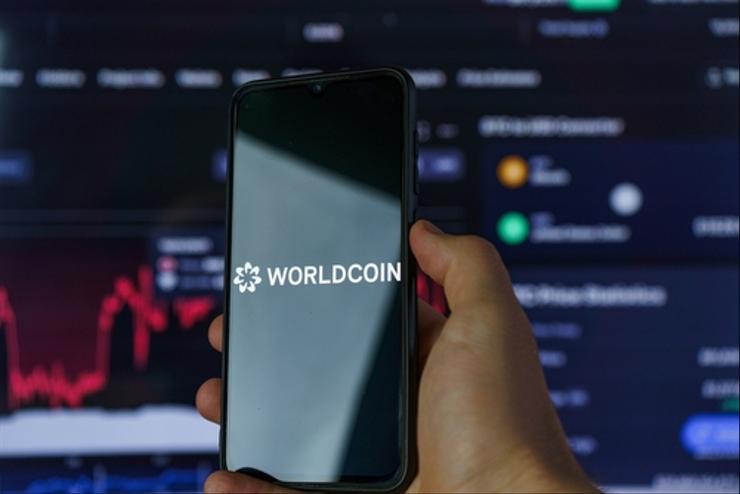Worldcoin integrates World ID on Solana using a Wormhole bridge - CoinJournal

Worldcoin integrates World ID on Solana via Wormhole’s new cross-chain bridge. The integration enables privacy-focused DApp authentication across blockchains. Worldcoin has seen rapid growth, expanding to Austria and Southeast Asia.
Worldcoin has confirmed the launch of seamless World ID integration for Solana via a new cross-chain protocol from the Wormhole Foundation.
Big day for AI. Big day for humans.@wormhole brings World ID to @solana 🫡 pic.twitter.com/LQYJLHg0gS — Worldcoin (@worldcoin) September 13, 2024
This achievement came just two and a half months after the Wormhole Foundation received a Worldcoin Wave 1 Community Grant, positioning the project as a key player in bridging decentralized identity solutions across multiple blockchains. World ID, Worldcoin’s privacy-focused identity verification service, is built on the layer-2 Ethereum network, World Chain. It allows users to authenticate their identity securely without revealing personal data, facilitating private and verified logins for DApps. The integration with Solana, one of the fastest-growing blockchain ecosystems, opens new opportunities for developers to implement World ID into their applications. Robinson Burkey, co-founder of the Wormhole Foundation, highlighted the importance of this collaboration, stating, “Bringing World ID to Solana is a big step forward for identity verification. With the integration of World ID and Wormhole Queries, developers can now easily build applications that prioritize real users across chains, improving trust in decentralized ecosystems.” This expansion is part of Worldcoin’s broader strategy to drive adoption of its World ID service, which had over 6.63 million users as of July 31, 2024. The company has seen rapid growth since its launch in July 2023, particularly in Europe and Southeast Asia. Recently, Worldcoin expanded into Austria, making it the second European country to host its services. However, privacy concerns have led to the suspension of operations in Spain. As cross-chain compatibility becomes increasingly important for blockchain ecosystems, this integration is expected to enhance the security and utility of decentralized applications while further boosting the adoption of Worldcoin’s World ID service. Despite the launch, the price of Worldcoin’s native token WLD remains 4.73% down trading at $1.52 at press time. The token saw a sharp decline earlier in the day testing a daily low of $1.46 before slightly surging to the current price.
Share this article
Categories
Markets
Tags
Cryptocurrency News
Starknet community approved a dynamic minting curve for STRK tokens. The minting curve adjusts token supply based on staking participation levels. Starknet Foundation can modify minting parameters to manage inflation and rewards.
The Starknet community has successfully passed a proposal to implement a dynamic minting curve for STRK tokens, a significant move to balance staking incentives with token supply. Nearly 98.94% of voters supported the new staking mechanism, which aims to offer more control over token inflation while incentivizing user participation. It makes Starknet the first major Ethereum Layer 2 (L2) to roll out staking functionality. The new minting curve included in the approved proposal is based on “Proposal 2” by Professor Noam Nisan, with slight modifications. It will adjust the minting rate according to staking participation levels. James Strudwick, executive director of the Starknet Foundation, described the approval as a game-opCEO of StarkWare, and echoed these sentiments, noting that the approval “gives the community a real stake — both literally and figuratively — in its future.” How the dynamic minting curve works The dynamic minting curve will adjust the token minting rate (M) based on the staking rate (S) and a constant (C), initially set at 1.6. The formula allows the token supply to be fine-tuned according to how many users are staking, preventing inflation when staking levels are high and encouraging participation when engagement is low. Additionally, the Starknet Foundation or a designated monetary committee will be responsible for adjusting the minting parameters. This includes the ability to modify the constant (C) within a range of 1.0 to 4.0, depending on staking trends. Any changes to minting rates will require public announcements and a two-week notice period for community review, ensuring transparency. With this dynamic system in place, Starknet hopes to foster a more engaged community and incentivize long-term network participation, helping to ensure the stability and growth of the platform.
Share this article
Categories
Markets
Tags
Cryptocurrency News Ethereum News
